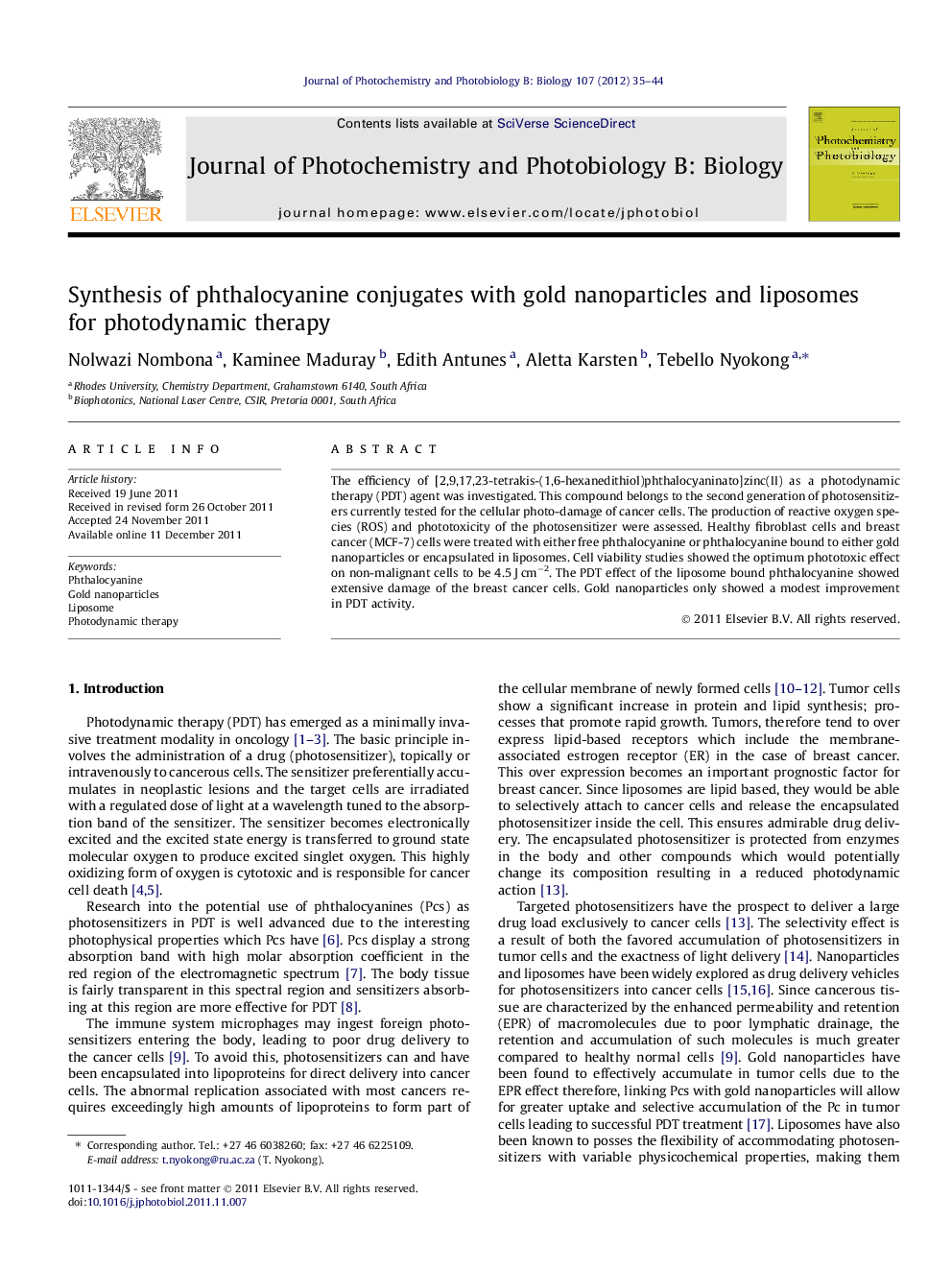| Article ID | Journal | Published Year | Pages | File Type |
|---|---|---|---|---|
| 29813 | Journal of Photochemistry and Photobiology B: Biology | 2012 | 10 Pages |
The efficiency of [2,9,17,23-tetrakis-(1,6-hexanedithiol)phthalocyaninato]zinc(II) as a photodynamic therapy (PDT) agent was investigated. This compound belongs to the second generation of photosensitizers currently tested for the cellular photo-damage of cancer cells. The production of reactive oxygen species (ROS) and phototoxicity of the photosensitizer were assessed. Healthy fibroblast cells and breast cancer (MCF-7) cells were treated with either free phthalocyanine or phthalocyanine bound to either gold nanoparticles or encapsulated in liposomes. Cell viability studies showed the optimum phototoxic effect on non-malignant cells to be 4.5 J cm−2. The PDT effect of the liposome bound phthalocyanine showed extensive damage of the breast cancer cells. Gold nanoparticles only showed a modest improvement in PDT activity.
Graphical abstract[2,9,17,23-Tris-(1,6-hexanedithiol)phthalocyaninato]zinc(II) exhibit good photodynamic therapy (PDT) activity towards breast cancer cells when attached to the liposome, gold nanoparticles showed only moderate improvement of PDT activity.Figure optionsDownload full-size imageDownload as PowerPoint slideHighlights► Zinc phthalocyanine tetra substituted with hexanedithiol was synthesized. ► The complex was tested for photodynamic therapy towards cancer cells. ► The activity was improved in liposomes.► Gold nanoparticles only showed moderate improvement.
